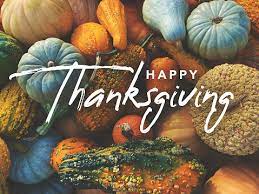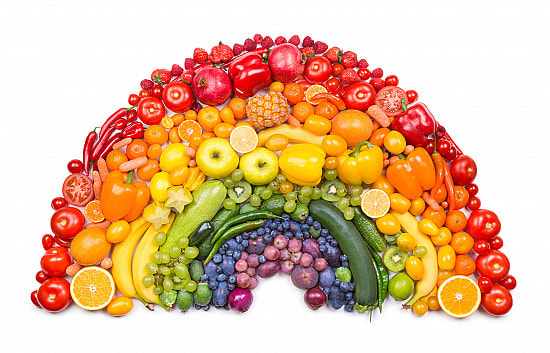|
As you know, we offer yoga for our patients. There are a number of reasons why I believe yoga, meditative stretching, exercise, etc., are so great for your well-being.
Yoga has been around for thousands of years and for good reason - it offers a wide range of physical, mental, and emotional benefits. Whether you're looking to improve your flexibility, build strength, reduce stress, or find inner peace, yoga has something to offer for everyone. One of the key benefits of yoga is improved flexibility. Through a series of poses and stretches, yoga helps to lengthen and stretch muscles, which can help improve your range of motion and prevent injuries. Additionally, yoga helps to build strength in your muscles, particularly in your core, which can improve your posture and provide stability and support for your body. Balance, particularly later in life - you all have heard me say, “Don’t fall!” - is vital to longevity and quality of life. Another benefit of yoga is its ability to reduce stress and promote relaxation. The deep breathing and mindfulness practices in yoga can help calm the mind and reduce anxiety, leading to a sense of peace and well-being. This can be especially helpful for those who lead busy or stressful lives. I don’t believe in telling you what kind of yoga you should practice because there are many different types of yoga, each with its own unique focus and benefits. Some popular types of yoga include:
I myself tried Goat Yoga this past week. I’ll be honest, it was a bit gimmicky for me, but I spent an hour and a half outdoors, stretching and practicing mindfulness, and that - with or without goats - I know was beneficial. No matter what type of yoga you choose, the key is to listen to your body and practice with mindfulness and awareness. With regular practice, you can experience the many benefits that yoga has to offer for your mind, body, and spirit. So whether you're looking to improve your physical fitness, reduce stress, or find inner peace, give yoga a try and see how it can transform your life.
0 Comments
Artificial Intelligence (AI) has rapidly permeated various aspects of our lives, and one of the most promising and transformative fields it has entered is healthcare. From diagnosing diseases to enhancing patient care and improving healthcare administration, AI is ushering in a new era of innovation and efficiency. I think that AI can be a powerful tool to make all of our lives easier, but I think in healthcare we should approach it with optimistic caution.
That said, let’s start by exploring the profound impact of AI in healthcare and how it is poised to revolutionize the industry.
Challenges and Ethical Considerations While AI in healthcare offers immense potential, it also comes with challenges and ethical considerations. Patient privacy, data security, and the potential for algorithmic biases must be addressed. Additionally, there's a need for robust regulatory frameworks to ensure the responsible use of AI in healthcare. I know we all want to use the power of AI. I actually used it to generate the following paragraph: Artificial Intelligence is revolutionizing healthcare by enhancing diagnostics, personalizing treatment plans, promoting preventive care, improving administrative efficiency, and accelerating drug discovery. It has the potential to make healthcare more effective, accessible, and efficient. However, it's crucial to address challenges and ethical concerns to ensure that AI in healthcare remains a force for good. As AI continues to evolve and healthcare providers embrace its capabilities, we can expect a brighter and healthier future for all. But, if you read that paragraph closely, you will see that it is pretty generic. I am impressed with AI as a tool, but I still think we need the personal touch in medicine. In our fast-paced, stress-laden lives, the pursuit of holistic well-being has become more paramount than ever. Amidst various wellness trends, aromatherapy stands out as a time-tested practice with roots dating back centuries. Beyond merely offering pleasant fragrances, aromatherapy has gained recognition for its potential health benefits, supported by a growing body of medical studies.
I personally love the smell of the holiday season, and I am certain you, too, associate certain smells with memories. During the year, we can recreate those positive memories through smells. There are also ways we can incorporate scent into our lives with look toward healthful living. So, what are essential oils? Contrary to popular belief they are not called essential because they are essential to life, although that could be holistically disputed. They are called essential because they are made from the essence of the plant from which they are extracted. Essential oils are highly concentrated, hydrophobic liquids containing volatile aroma compounds from plants. These compounds are often responsible for the distinct fragrances associated with different plants and play a crucial role in the plants' defense mechanisms, attracting pollinators, and inhibiting the growth of competing flora. Extracted from various plants, they are volatile compounds that have been used for centuries across diverse cultures for their therapeutic and aromatic properties. Let’s delve into the science-backed advantages of aromatherapy and explore how incorporating scents into your daily routine can contribute to a healthier and more balanced life.
The key to stress reduction lies in the impact of aromatic compounds on the limbic system—the part of the brain responsible for emotions and memory. Essential oils like lavender, chamomile, and bergamot have been shown to modulate the activity of neurotransmitters, promoting a sense of tranquility and reducing the physiological markers of stress.
Certain essential oils, such as lavender and cedarwood, possess sedative properties that can induce a state of relaxation conducive to better sleep. Incorporating these scents into your nighttime routine, whether through diffusers or pillow sprays, can contribute to a more rejuvenating and restorative sleep experience.
Moreover, peppermint essential oil has been shown to enhance cognitive performance and increase alertness. By incorporating these invigorating scents into your workspace or study area, you can create an environment that fosters mental clarity and productivity.
Evidence-Based Complementary and Alternative Medicine highlighted the bronchodilator effects of eucalyptus essential oil, suggesting its potential role in managing respiratory issues. Incorporating these scents into your wellness routine, whether through inhalation or steam inhalation, may provide relief from congestion and promote respiratory well-being. As we navigate the complexities of modern life, it's important to explore holistic approaches to well-being. Aromatherapy, backed by an increasing body of medical research, offers a natural and accessible means to enhance physical, mental, and emotional health. Whether you seek stress relief, improved sleep, mood enhancement, or respiratory support, the diverse array of essential oils provides a customizable and enjoyable path to holistic wellness. Essential oils, with their rich history and versatile applications, are a natural gift from the plant kingdom. As we embrace the benefits of these aromatic wonders, it's important to explore and understand their unique properties and the various ways they can be incorporated into our daily lives. Whether seeking relaxation, rejuvenation, or relief from common ailments, essential oils offer a holistic approach to well-being that connects us with the healing power of nature. If you are interested, look around and find some peer reviewed articles on aromatherapy. www.webmd.com/balance/stress-management/aromatherapy-overview www.webmd.com/sleep-disorders/video/aromatherapy-sleep www.webmd.com/covid/news/20230104/essential-oils-restore-smell-covid-study As Thanksgiving approaches, many of us eagerly anticipate the joy of gathering with loved ones around a bountiful feast. However, the traditional Thanksgiving spread is often associated with indulgence and overeating. Some of you have heard me talk about the Vegan Thanksgiving I am going to participate in for a second year in a row in Los Angeles with Julia and her boyfriend and his parents. I am not advocating that, but you can definitely bring in some extra plant based items to add to the options you already have on your table.
This year, why not break free from the calorie-laden traditions and embrace a healthier, yet equally delicious, Thanksgiving dinner? There are many creative and nutritious alternatives that will leave your taste buds satisfied without compromising your commitment to health. Start with a Fresh Spin on Appetizers: Instead of reaching for heavy appetizers laden with excess calories, consider serving a refreshing and nutritious starter. A colorful and vibrant salad with mixed greens, cherry tomatoes, and a light vinaigrette can set the tone for a health-conscious meal. Another option is a vegetable platter with hummus or a yogurt-based dip for a satisfying crunch without the guilt. There are dozens of recipes on websites that you can check out HERE. Revamp the Turkey: Thanksgiving wouldn't be complete without turkey, but you can make this centerpiece healthier by opting for a leaner cut and preparing it in a more wholesome way. Consider roasting the turkey with a mix of herbs and spices for flavor without excess salt or butter. If you're feeling adventurous, try a herb-infused olive oil rub for a unique and delicious twist. HERE is a recipe, but there are dozens on the internet. Embrace Nutrient-Rich Side Dishes: Swap out traditional high-calorie sides for nutrient-rich alternatives. Roasted sweet potatoes seasoned with a touch of cinnamon and olive oil provide a healthy and satisfying alternative to traditional mashed potatoes. Steamed green beans, sautéed Brussels sprouts, or a colorful medley of roasted vegetables can add both flavor and nutrition to your Thanksgiving table. Stay away from the heavy cream and butter, or try your recipe with only half the usual! HERE are some choices. Whole Grain Goodness: When it comes to stuffing and grains, opt for whole grains like quinoa or brown rice instead of traditional white bread stuffing. These alternatives not only add a nutty flavor and satisfying texture but also bring additional fiber and nutrients to the table. I discovered Quinoa a few years ago and while it took me a moment, I have come to really enjoy it. Try THIS recipe. Sensational Sauces: Ditch the canned cranberry sauce loaded with sugar and experiment with a homemade version. A simple cranberry-orange relish with minimal added sugar can provide a burst of flavor without the unnecessary calories. We experimented with fresh cranberries and it was surprisingly easy to do. HERE is a recipe. Similarly, consider making your own gravy using the drippings from the turkey and incorporating herbs for added taste. I hate to admit that this is where we do use some heavy cream! Desserts! Thanksgiving desserts are often synonymous with pies and cakes, but there are healthier options that can still satisfy your sweet tooth. BUT I cannot live without my pies so I am not going to advise against them because I do need to be able to enjoy this part of the meal without interference from my wife and her desire to be healthy. That said, consider serving a fruit salad with a drizzle of honey or a yogurt parfait with layers of fresh berries and granola. If you can't resist a classic pie, opt for a whole grain crust and fill it with a reduced-sugar filling. This Thanksgiving, savor the flavors of the season while prioritizing your health. By making thoughtful substitutions and incorporating nutrient-dense ingredients, you can create a delicious feast that leaves you feeling satisfied and grateful for the nourishment you've provided your body. Cheers to a Thanksgiving that's both indulgent and health-conscious! In our fast-paced, modern world, quality sleep is often an undervalued asset. We frequently sacrifice those precious hours of rest for the sake of productivity, entertainment, or other commitments. However, healthy sleep habits are essential for our overall well-being. In this blog post, we will explore the importance of sleep and provide you with practical tips to develop and maintain healthy sleep habits for a happier, healthier life.
The Importance of Sleep Sleep is a fundamental component of our daily lives. It's not just about resting; it's a complex process that plays a vital role in physical and mental health. Here are some reasons why healthy sleep habits are crucial:
Developing Healthy Sleep Habits
Developing and maintaining healthy sleep habits is a crucial part of self-care and overall well-being. Prioritizing sleep will lead to improved physical health, better mental clarity, and increased vitality. Remember that good sleep is a habit that requires consistency and effort. By making the necessary changes in your daily routine and creating a sleep-conducive environment, you can enjoy the benefits of a restful night's sleep and wake up each day feeling rejuvenated and ready to tackle life's challenges. Sweet dreams! Fruits and vegetables are nature's exquisite gift to us, offering a spectrum of colors, flavors, and nutritional benefits. In this blog post, we'll delve into the wonderful world of fruits and vegetables, exploring their health benefits, the importance of variety, and creative ways to incorporate them into your daily diet.
The Nutritional Powerhouses Fruits and vegetables are nutrient-rich, low in calories, and packed with essential vitamins, minerals, fiber, and antioxidants. They are vital for maintaining good health and preventing chronic diseases. Here's a closer look at some of their key benefits:
The Importance of Variety Eating a wide variety of fruits and vegetables is crucial because each type offers a unique combination of nutrients. The more colorful and diverse your plate, the better. Here's why variety is key:
Incorporating More Fruits and Vegetables into Your Diet Now, let's explore creative and practical ways to include more fruits and vegetables in your daily meals:
Fruits and vegetables are not just a part of a healthy diet; they are the heart of it. By embracing the vibrant world of these nutrient-rich foods, you can enhance your overall health and well-being. Make it a goal to fill your plate with a colorful assortment of nature's finest offerings, and you'll discover a newfound appreciation for the delicious and healthful wonders of fruits and vegetables. Your body will thank you! WHY ARE WEIGHT LOSS AND EXERCISE SUPPORT GROUPS SO SUCCESSFUL?
It can be daunting to begin an exercise program without motivation. Many of us cannot get a routine going, and if we do, we often abandon the effort, especially when we do not see immediate results. Similarly, losing weight is a challenging mental and physical process, which is why many people may find themselves giving up after one or two attempts. Additionally, getting others to understand what you are going through can be frustrating if you are trying to lose weight and others are not. With weight loss and exercise support groups, you will have a solid support system with whom you can discuss your struggles with temptations and who can provide you tips on how they have gotten through similar situations. These are the primary reasons group programs work:
Exercise and weight loss take a lot of hard work and driving determination, but group programs provide you with accountability, added motivation and support, and valuable reliability to provide you with all the necessary tools to succeed. So how do refined carbs increase your blood sugar? Diets high in sugar and low in fiber can cause some serious swings in your blood glucose levels. Simple carbohydrates act as a quick source of energy for your body, meaning you don’t have to work very hard to get energy from them. When you eat a sugary meal, the energy is released fairly quickly into your bloodstream in the form of glucose. Too much glucose too often can lead to high blood glucose levels or poor blood sugar control. This can lead to energy crashes, poor appetite control, sugar cravings, and mood swings. And is especially critical for anyone trying to manage diabetes.
Many people prefer to use the Glycemic Index (GI scale) to distinguish between complex and simple carbohydrates. The GI scale ranks carbohydrate foods based on how they impact your blood sugar after eating them using a range of 0 to 100 (100 being the largest impact on blood glucose). For an excellent article listing the precise GI for each food, see https://www.health.harvard.edu/diseases-and-conditions/glycemic-index-and-glycemic-load-for-100-foods But in order to truly understand a food's impact on blood sugar, you must consider how much glucose a food can deliver into the bloodstream in addition to how rapidly. In other words, just because a low-carb food can be absorbed quickly, doesn't mean it contains enough carbohydrates to spike blood sugar levels. Using glycemic load takes into account both and tends to be a stronger measurement of a carbs impact. Regardless, neither glycemic index nor load considers your overall diet. Eating a high GI/GL food in a mixed dish or on occasion is likely not going to result in uncontrolled blood sugar. Having a donut for breakfast is going to impact your energy levels much more drastically than adding a little honey to your oatmeal. Eating too many refined carbs will negatively impact your health. High sugar intake is linked to weight gain, heart disease, and type 2 diabetes. Too much sugar in the diet can lead to increased blood cholesterol, a risk factor for heart disease. Excess sugar intake is also associated with high blood glucose and insulin resistance, which in turn could increase your risk of developing type two diabetes. So if you are concerned about your blood sugar control, scaling back on refined carbohydrates or total carb intake will certainly help, but you should always check with your doctor and get regular blood tests to assess your health status first. Additionally, because of the impacts on blood sugar and appetite, many argue that refined carbs can lead to overeating and weight gain. And they have been used in association studies to demonize sugar as the cause of the obesity epidemic. All of these factors are why the American Heart Association recommends limiting your added sugar intake to less than 25 grams of sugar per day. However, it is crucial to note that sugar alone won't cause you to gain weight, only too many calories can do that. And the occasional sugary food or beverage will not destroy your health. The bottom line is that weight loss and improving your health go far beyond the type of carbohydrates you eat. However, aiming to get more “good” carbs in the right amounts can support your daily nutritional needs, improve your appetite control, and support better energy levels throughout the day. If you are looking to cut back on refined carbohydrates, aim to eat more whole grains and high-fiber foods, and limit your intake of empty calories and highly processed foods. But, whatever you do, don't beat yourself up for the occasional splurge. All foods can fit into a healthy lifestyle! If you’d like more information on nutrition and how to eat the best way that is reasonable and sustainable for you, please contact me at 843-295-9114. My services are complimentary to you as part of Dr. Gigante’s medical practice. In addition, if anyone would like to see a particular health and wellness issue addressed, please email me your suggestions at LeighanneLakeKubec@gmail.com Wishing you all a healthy and happy life. Leighanne Kubec Happy New Year! If you have entered 2023 with the desire to make your health and fitness a high priority, we have some basic tips about how to get started on this new year’s resolution. Knowing which techniques work best for you when it comes to looking after your health can be tricky. Everybody is different, so one thing that worked for your friend may not work for you. It is all about finding the balance between good and bad. But there are some fundamentals that apply to everyone seeking better health and wellness.
EATING WELL One of the key things you can do this year to be healthy is to watch what you eat. Many people start the year with great intentions and the desire to shed pounds after the holidays. More than half the people who embark on this resolution stick with it after January as they like how it makes them feel healthier and cleaner. Be part of that majority and make your wellness a priority! No matter what type of diet you choose to enjoy, it is all about watching what you eat and enjoying things in moderation. It is not sustainable to eat a lot of junk food each and every day. Not only will you feel constantly exhausted, but you are also putting yourself at risk of weight-related conditions such as diabetes and heart disease. Now is the time to do this if you want to look into healthy alternatives for your favorite snacks. If you would like assistance and support in your journey of eating better, please contact our nutritional consultant, Leighanne Kubec, to schedule an appointment. She will help create a plan that suits your lifestyle and will be sustainable. More importantly, she will support you and meet with you as often as you like to be sure you stay on track and achieve your goals. Her services are free to all of our patients. Leighanne can be reached at (843) 295-9114. GET MOVING! Something else to consider when it comes to your health is how much you are moving around during the day. You may think that you don’t have the time to incorporate exercise into your daily routine, but you do. Even if you do little bits of exercise throughout the day, this is still better than nothing at all. You could do a ten-minute workout in the morning, during lunch, and in the evening. This equates to the recommended daily workout you should be getting. The key to exercise working and you sticking at it is finding something you enjoy doing. You can join Leighanne’s yoga class, and her upcoming light weights class, which are conducted via Zoom (we hope to have live classes again soon!) and are recorded for you to enjoy at your own convenience. If you’d like to join the class and/or receive the recorded classes, contact Leighanne at LeighanneLakeKubec@gmail.com so that she can add you to her list. Again, this service is free to all of our patients. GET ENOUGH SLEEP Finally, being healthy isn’t just about what you eat and how much you move around. You also need to look after your body, which you can do when you sleep. If you are not getting enough sleep, you will likely feel the effects of being over-tired, lethargic, and less motivated to eat well and exercise. Lack of adequate sleep is connected to weight gain, so you should aim for six to nine hours of sleep each night. If you want to be alert and awake the next day, you will also need good quality sleep during this time. If you are constantly waking up during those times, then you need to address this issue and speak with Dr. Gigante. Stay tuned for more health and wellness information in our monthly blog! If you have any topics you would like us to explore in this monthly blog, please feel free to reach out to us! We are always happy to have new issues to discuss. CANNABIS, MARIJUANA, CBD OIL—WHAT DOES IT ALL MEAN? WHAT ARE THE BENEFITS?
In recent years, interest has grown regarding the potential health effects and benefits of cannabis as both CBD oil and medical marijuana. Often people wonder if CBD oil is the same as marijuana. Will it get me high? Is it legal? This article will explain the differences between the two substances and outline the potential benefits of both. FIRST OF ALL, WHAT IS CANNABIS? Today, “cannabis” and “marijuana'' are often used interchangeably in the industry, which can cause confusion. Because the word “cannabis” technically refers to the entire genus of flowering plants that includes both hemp and marijuana. While CBD can come from either hemp or marijuana, it is often derived from hemp in order to avoid the addition of larger amounts of THC. THC, on the other hand, is derived from marijuana. In essence, marijuana is the intoxicating cousin of hemp. IS CANNABIS LEGAL? So, while marijuana and hemp might share a species, they are legally and chemically distinct in a significant way.Marijuana contains a significant amount of THC, while CBD (derived from hemp) contains .3% or less. In 2018, the Farm Bill was signed into law. It removed hemp (a variety of the Cannabis sativa plant) and derivatives of cannabis with low levels of THC (0.3% or less) from the definition of marijuana in the Controlled Substances Act. As of July 2023, 38 states and Washington, D.C. have enacted policies allowing medical marijuana and products containing THC to be prescribed by a doctor; and 19 states also allow recreational use of marijuana and THC-containing products. WHAT ARE THE KEY DIFFERENCES BETWEEN MARIJUANA AND CBD OIL? CBD and THC affect different receptors in the brain. Because of this, CBD typically does not have psychoactive effects—in other words, it won't cause you to get high. THC, on the other hand, does have psychoactive effects. It is the compound that produces the high that people associate with marijuana. So, while THC and CBD share similarities, there are some key differences between the two compounds: THC
While research on the potential health benefits of THC, CBD, and other cannaboids is still in the early stages, there is evidence that these substances may be helpful for conditions including:
CBD vs. THC FOR PAIN RELIEF CBD and THC can both be beneficial for pain relief. Because THC has psychoactive effects, it may produce more immediate pain relief. However, CBD can help reduce inflammation, which is useful for long-term effectiveness. Some evidence suggests that taking both CBD and THC may provide the greatest pain relief. FDA-APPROVED MEDICATIONS While cannabis itself has not been FDA approved to treat any condition, there are a few drugs approved by the U.S. Food and Drug Administration (FDA) that contain CBD or THC:
Both THC and CBD can be consumed in a number of different forms. THC is most often consumed by smoking marijuana. But both THC and CBD are available in other forms including:
SOME FINAL THOUGHTS AND WORDS OF ADVICE Both THC and CBD may have several benefits, but you should always talk to your doctor first before you try any products containing these cannabinoids. Both CBD and THC hold promise for alleviating symptoms and even treating some medical and mental health conditions, but research in this area is still relatively new and further investigation is needed. In addition, because the laws regarding the use of cannabis and cannabis products are rapidly changing, you should always check your state's laws before using products containing CBD or THC. For our local clients. Please note that CBD products containing less than 0.3% THC are currently legal in South Carolina. |
|






 RSS Feed
RSS Feed